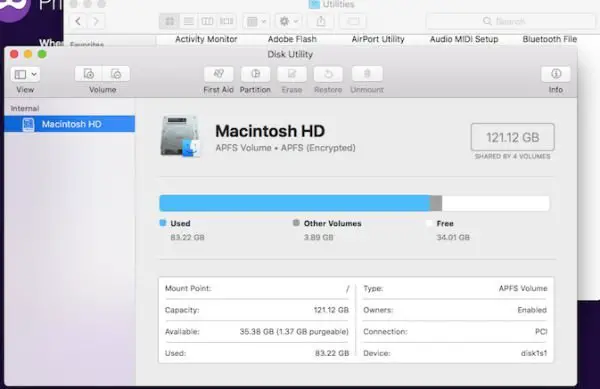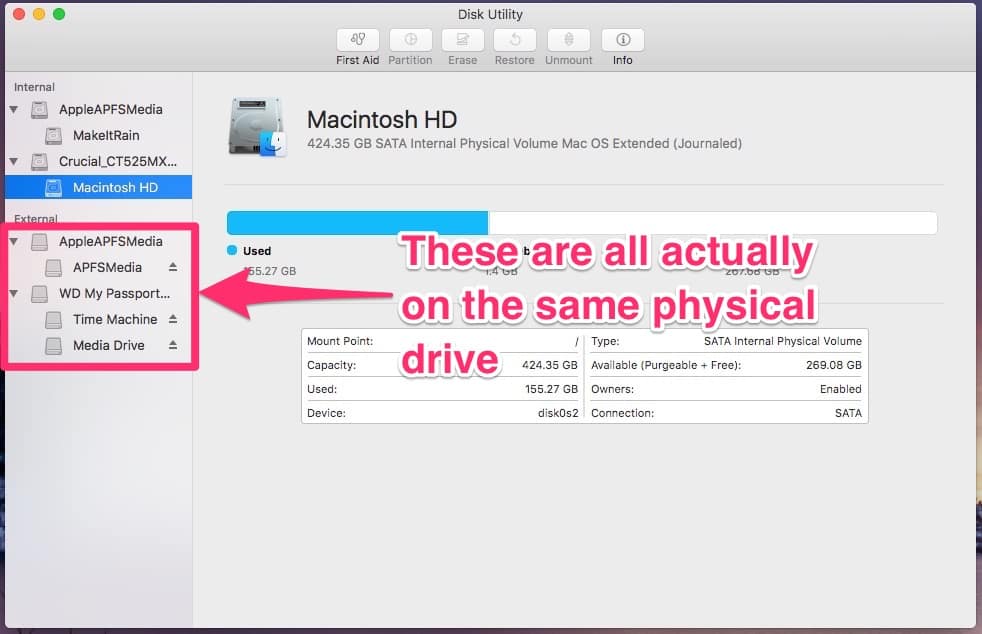
- PARTITIOINING FOR MAC SIERRA HOW TO
- PARTITIOINING FOR MAC SIERRA MAC OS
- PARTITIOINING FOR MAC SIERRA INSTALL
- PARTITIOINING FOR MAC SIERRA PROFESSIONAL
If you want the Windows partition to show up first, then you would want to create the partition during the install.
PARTITIOINING FOR MAC SIERRA INSTALL
The Windows partition can be created either during the install or after the install. That extra space will allow you to fit both operating systems with room to spare. But formatting with the Disk Utility will allow you to create a larger hidden EFI partition compared to what you would create with Windows Disk Management (200MB with GUID vs. For starters, you’ll need this format to install macOS. There’s a very good reason for formatting the disc in the GUID format first. To do this, you’ll need to use the Disk Utility application, which is the macOS equivalent of Disk Management in Windows.ĭisk Utility can be accessed during the install or from within the operating system after the installation is complete. The first step in the process is to format the drive as GUID.
PARTITIOINING FOR MAC SIERRA HOW TO
How to Dual Boot Windows 10 and MacOS High Sierra on a Hackintosh The dual-boot option is ideal for those who don’t have multiple drives on hand. While it’s typically better to have macOS on one drive and Windows on another, it’s possible to dual boot both operating systems on the same drive. Launchctl load /System/Library/LaunchDaemons/ wondered if you could dual boot macOS and Windows on the same hard drive disk? With a Hackintosh, you can.

The following commands *may* load the necessary items to run diskutil: Single User Mode also only starts a minimal system, leaving many frameworks and daemons unloaded, including some required by diskutil. To mount the system drive as read/write, use this command: Single User Mode mounts the system volume as read-only.
PARTITIOINING FOR MAC SIERRA PROFESSIONAL
In my professional opinion, nobody should ever run the commands listed below. I take no responsibility if in using this information, you damage your hardware or lose data. Someone in your situation should take this computer to an Apple Authorized Service Center and have the display replaced with Apple parts. I sympathize with your situation, but this is getting way beyond anything supported or recommended. Run the command: sudo mount -t msdos /dev/disk0s1 /Volumes/efi Mount the EFI partition at the efi mount point. We can create a directory called efi within /Volumes by running the following command: mkdir /Volumes/efiģ.
PARTITIOINING FOR MAC SIERRA MAC OS
On Mac OS X, mount points are typically created in /Volumes. In this case, the volume identifier of the EFI partition is disk0s1Ī mount point is a directory where a non-booted volume is mounted. The output should look something like this: /dev/disk0Ģ: Apple_HFS Macintosh HD 250.1 GB disk0s2ģ: Apple_Boot Recovery HD 650.0 MB disk0s3 Discover the volume identifier for your EFI boot partition.

To mount an EFI boot partition, follow these steps:ġ.

Before you read any further, take note: altering your EFI boot partition is not supported by Apple and The Mac Admin takes no responsibility if you render your computer(s) unbootable by mounting and modifying this partition. However, the EFI partition is used as a staging area for firmware updates.” When people look to create non-standard boot environments or attempt to build a hackintosh, the first step is often mounting and modifying the EFI boot partition. Here’s the answer to another reader request…Īccording to WIkipedia, “On Apple–Intel architecture Macintosh computers, the EFI partition is initially blank and not used for booting.


 0 kommentar(er)
0 kommentar(er)
